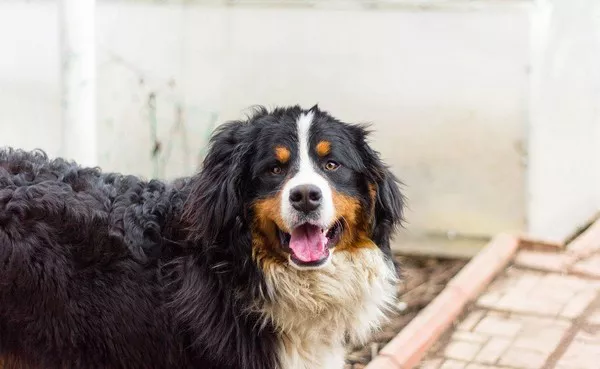The American Foxhound is a breed renowned for its hunting abilities, loyalty, and friendly demeanor. Originally bred for hunting foxes in packs, these dogs are known for their endurance, agility, and keen sense of smell. However, as with any pet, potential owners must consider their characteristics and needs, particularly regarding loneliness and separation. In this article, we will explore whether American Foxhounds can be left alone, their temperament, the effects of loneliness, and ways to ensure they remain happy and healthy even when left alone for extended periods.
Understanding the American Foxhound
Breed Characteristics
The American Foxhound is a medium to large breed with a strong, athletic build. Here are some of their defining characteristics:
Size: Males typically weigh between 65 to 75 pounds, while females weigh around 50 to 65 pounds. They stand about 21 to 25 inches tall at the shoulder.
Coat: They have a short, dense coat that comes in various colors, including tri-color (black, white, and tan), red and white, or tan and white.
Temperament: American Foxhounds are known for being friendly, gentle, and sociable. They usually get along well with children and other pets, making them great family companions.
History and Purpose
The American Foxhound has its roots in colonial America, where it was bred to hunt foxes. These dogs were developed for their stamina, speed, and strong hunting instincts. Unlike some breeds that were bred for companionship, American Foxhounds were specifically developed for their ability to work independently and as part of a pack.
Energy Level and Exercise Needs
American Foxhounds are energetic dogs that require plenty of exercise. They thrive in environments where they can run and explore. Regular exercise is crucial for maintaining their physical and mental health. Owners should ensure their Foxhounds receive at least an hour of exercise daily, which can include walks, playtime, and training sessions.
The Nature of Separation Anxiety
What is Separation Anxiety?
Separation anxiety is a behavioral condition that can affect many dog breeds, including the American Foxhound. It occurs when a dog becomes overly anxious and distressed when left alone or separated from their owner. Symptoms can vary but often include excessive barking, destructive behavior, attempts to escape, and other signs of distress.
Signs of Separation Anxiety
When assessing whether an American Foxhound can be left alone, it is essential to recognize the signs of separation anxiety:
Barking and Howling: Loud vocalizations when the owner leaves.
Destructive Behavior: Chewing furniture, digging, or attempting to escape.
Pacing: Restlessness or inability to settle down.
Bathroom Accidents: Uncontrollable urination or defecation inside the house.
Excessive Salivation: Drooling or panting excessively.
Causes of Separation Anxiety
The reasons a dog may develop separation anxiety are varied and can include:
Early Life Experiences: Dogs that were not properly socialized or had traumatic experiences during their early years may develop anxiety.
Changes in Routine: Moving to a new home, changes in family structure, or alterations in the owner’s schedule can trigger anxiety.
Lack of Exercise: Insufficient physical and mental stimulation can lead to anxiety and frustration.
Genetics: Some dogs may be predisposed to anxiety due to their genetic makeup.
Can American Foxhounds Be Left Alone?
General Considerations
American Foxhounds, by nature, are pack animals. They thrive on social interaction, whether with humans or other dogs. However, whether they can be left alone depends on several factors:
Age: Puppies may struggle more with being left alone compared to adult dogs, as they are still developing their independence.
Training: Dogs that have been well-trained and conditioned to be alone may fare better than those that have not received such training.
Socialization: Foxhounds that are well-socialized and comfortable being around other pets or people may be more adaptable to being left alone.
Length of Time
While some American Foxhounds can tolerate being left alone for several hours, it is crucial to limit this time and prepare them for such situations. In general, most dogs should not be left alone for more than 4 to 6 hours at a time. If left alone for too long, American Foxhounds may become bored, leading to destructive behaviors.
The Importance of Gradual Desensitization
If you need to leave your American Foxhound alone, it is essential to help them adjust gradually. Here are some tips for gradually desensitizing your dog to being alone:
Start Small: Begin by leaving your dog alone for short periods, gradually increasing the time as they become more comfortable.
Create a Positive Environment: Use positive reinforcement to reward calm behavior when you leave and return home.
Provide Engaging Toys: Interactive toys or puzzle feeders can keep your dog occupied and mentally stimulated while you’re away.
Tips for Leaving Your American Foxhound Alone
Provide Mental and Physical Stimulation
Before leaving your American Foxhound alone, ensure they have had sufficient exercise. A long walk or a game of fetch can help tire them out. Additionally, consider providing engaging toys or puzzles to keep their mind stimulated while you are gone. Toys that dispense treats or require problem-solving can be particularly effective.
Create a Safe Space
Establish a comfortable and secure space for your Foxhound when you are away. This can be a designated room or area with their bed, toys, and access to water. Ensuring this space is free from hazards and distractions can help reduce anxiety.
Use Crate Training
Crate training can be beneficial for American Foxhounds, as it provides them with a safe, den-like environment. If introduced properly, many dogs find comfort in their crates. Make sure the crate is large enough for your Foxhound to stand, turn around, and lie down comfortably. Gradually accustom your dog to the crate by providing positive reinforcement and ensuring they associate it with good experiences.
Keep Departures and Arrivals Low-Key
When leaving or returning home, try to keep the atmosphere low-key. Avoid making a fuss when you leave, as this can increase anxiety. Instead, calmly say goodbye and leave without prolonged farewells. Upon your return, avoid making a big deal about it as well. This helps your dog understand that your departures and arrivals are normal parts of the day.
Consider Companionship
If you must be away for extended periods, consider the benefits of having another dog or pet for companionship. American Foxhounds are generally social and may thrive with the company of another animal. However, introducing a new pet requires careful consideration and gradual introductions to ensure compatibility.
Hire a Dog Walker or Pet Sitter
If you work long hours or need to be away frequently, consider hiring a dog walker or pet sitter. Regular visits from a dog walker can break up your Foxhound’s day, providing them with much-needed exercise and companionship. A pet sitter can also offer social interaction and help alleviate boredom.
Monitor Their Behavior
Pay attention to your American Foxhound’s behavior when you leave them alone. If they show signs of distress, such as excessive barking or destructive behavior, you may need to adjust your approach. Consider consulting a professional dog trainer or behaviorist if separation anxiety becomes a significant issue.
Training Techniques for Independence
Basic Obedience Training
Before you can leave your American Foxhound alone, it is essential to establish a foundation of basic obedience training. Commands such as sit, stay, and come can help create structure and reinforce good behavior. Consistent training sessions using positive reinforcement will help your Foxhound understand what is expected of them.
Gradual Alone Time Training
Begin training your dog to be alone by gradually increasing the time they spend alone. Start with just a few minutes and gradually increase to longer periods. Reward them for remaining calm and quiet during your absence. This gradual desensitization can help build their confidence and comfort level.
Counter-Conditioning
Counter-conditioning is a technique that involves changing your dog’s emotional response to being alone. This can be achieved by pairing your departures with positive experiences, such as giving them a special treat or toy only available when you leave. Over time, this can help them associate your absence with positive feelings rather than anxiety.
Desensitization Techniques
Desensitization involves exposing your American Foxhound to the triggers that cause their anxiety in a controlled and gradual manner. For example, practice leaving and returning home without actually going anywhere. This can help them learn that your comings and goings are normal and not cause for alarm.
Professional Help
If your American Foxhound continues to struggle with being left alone despite your efforts, consider seeking professional help. A certified dog trainer or behaviorist can assess the situation and provide tailored advice and training techniques to help your dog cope with their anxiety.
Long-Term Considerations
Socialization Throughout Life
Socialization is crucial for American Foxhounds throughout their lives. Regular exposure to various environments, people, and other animals can help prevent anxiety and behavioral issues. Ensure your dog has opportunities for social interaction, whether through dog parks, training classes, or playdates with other dogs.
Regular Vet Check-Ups
Regular veterinary check-ups are essential for maintaining your American Foxhound’s health. If your dog exhibits signs of anxiety, consult your veterinarian to rule out any underlying medical issues that could contribute to their behavior. A vet may also recommend behavioral therapies or medications to help manage severe anxiety.
Adjusting Your Lifestyle
As a pet owner, it’s essential to evaluate your lifestyle and ensure it aligns with the needs of your American Foxhound. If you anticipate being away from home frequently, consider whether you can provide the necessary time and attention your dog requires. If not, you may need to reassess your ability to care for a Foxhound or explore options such as shared ownership with a family member or friend.
Ongoing Training and Enrichment
Continued training and mental enrichment are vital for the well-being of your American Foxhound. Engage in regular training sessions and provide mental challenges to keep their minds sharp. Puzzle toys, scent games, and obedience training can help keep your dog mentally stimulated and happy.
Conclusion
American Foxhounds can adapt to being left alone, but it requires careful consideration, preparation, and training. By understanding their needs, providing sufficient exercise and mental stimulation, and gradually acclimating them to being alone, owners can help their Foxhounds cope with separation. It’s essential to monitor their behavior, provide a safe environment, and seek professional help if anxiety becomes a significant concern. With the right approach, American Foxhounds can thrive in a loving home, even when their owners are not around.
Related Topics:



















